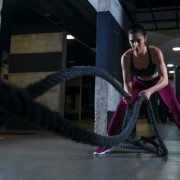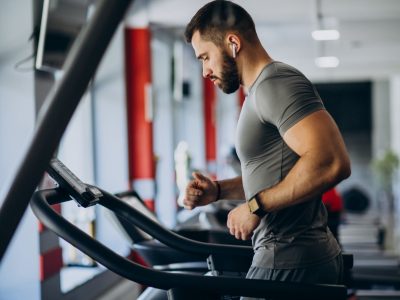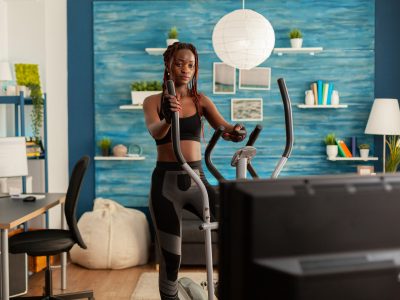November 14, 2023
I tend to be intensely curious about everything related to optimizing the human brain and body…
…for example, I read or listen to an average of three to five health and science-oriented books a week, spend most mornings immersed in health and fitness research and journals, engage in long-form podcast conversations (I’m so blessed by this!) twice a week for up to 90 minutes for nearly 20 years with wellness, longevity, and nutrition experts who are way smarter than me and have tried out nearly every biohack, fitness tool, and supplement on the face of the planet.
This continued process of deep, involved immersion in research and self-experimentation has granted me a wealth of insight into what works and what doesn’t. As a result, probably the most popular topics I’m asked about regularly are diet, nutrition, and supplementation, which is one of the primary reasons I published my original nutrition and recipe advice-packed Boundless Cookbook a few years ago…
…and why I am now launching my latest biohacked cookbook, Boundless Kitchen.
Anyways, you’ve no doubt noticed there are oodles of recommendations out there about what to eat for weight loss and general health — recommendations that seem to change constantly, or even at a given time can be radically different depending on the information source and the financial motivation of whoever is dishing (heh) out the advice.
For example, I’m often asked:
“Is fat bad?”
“What about coffee, soy, meat, and gluten?”
“Should you be counting calories?”
“Are you even carnivore, bro?”
…and of course, the world-famous, age-old question, “Will this break my fast?”
So now, within the pages of Boundless Kitchen, the formidable assignment I’ve been immersed in for the past two years was to put together a guide for you that serves as your one-stop shop for eliminating the annoying confusion, expense, and overwhelm that comes with trying to figure out what the heck you’re supposed to eat on a typical day — and to not feel like you’re dieting all day, or simply trying to decode how to properly pry open a pomegranate.
Boundless Kitchen distills in easy-to-understand language and simple instructions all the knowledge of the foods, nutrition hacks, molecular gastronomy tactics, cooking, and food prep styles that have helped me and my family function optimally — all based upon years of relentless research and experimentation with my own diet. And now, all that knowledge is yours.
Since I love to eat, I feel strongly about food as a pathway to connection to family and friends, and I distaste healthy food that tastes like friggin’ cardboard. I also took taste, texture, and presentation into account within the pages of Boundless Kitchen, so you don’t have to worry about any of these recipes looking or tasting like crap — all the way down to organ meats and pre-sleep gummy bites.
So, for example, let’s say you’ve always been curious what a delicious, yet somewhat bastardized-by-yours-truly, nose-to-tail, carnivorous diet close to how our ancestors ate actually tastes like, along with some modernized modifications and biohacks thrown in. Well, you’ll definitely get that in Boundless Kitchen. Ditto for plant-based recipes that will give you a taste-bud orgasm you’ll never forget, along with alcohol and dessert recipes that won’t make you feel like skipping the gym the next morning because you feel so crappy and toxified.
As a creature of habit, productivity, and reduced decision-making fatigue, my own meals do not tend to vary greatly from day to day, but I am also not about imposing strict rules. Instead of writing this cookbook as a strict and rigid meal planner, I’ve instead crafted it as a choose-your-own path culinary adventure.
That means you can look forward to dessert recipes that don’t taste like sandpaper, like Buttered Maple Pecan Keto Brick Cheesecake and Baked Blueberry Donuts with a mouthwatering creamy coconut glaze. Additionally, this cookbook includes tricked-out cocktails that can actually fix up and help your liver while drinking them — and shock your friends that they too can have alcohol without doing damage, or at least mitigating any damage tremendously while sipping one of my tasty Boundless Kitchen biohacked brews.
With that said, in this article, I figured I’d give you a rundown of what I eat on a typical day so you can get a good idea of how Boundless Kitchen can advise you on biohacking your own body with healthy yet tasty food and drink.
Before we get started on a sample walkthrough of a few of my own meals, I’ll make two important points here:
Try not to get overwhelmed by the number of foods, ingredients, and supplements I sometimes consume daily. Remember, I’ve spent years trying things out, substituting this for that, etc. So instead of maxing out your credit card and overloading your body with an onslaught of unfamiliar input, I recommend trying two or three things that you find most interesting and building from there. This cookbook won’t break the bank, but I give you plenty of options for upgrading your pantry with wild superfoods, if you care to.
Each of the products (foods, ingredients, and supplements) that are part of my daily diet is in there for good reason. If I went deep into the nitty-gritty science and health benefits of every single one of those, though, this article could be a hundred pages long. Instead, I suggest searching this website here with the name of whatever ingredient it is you want more information on.
Oh, also, be sure to read through to the end of the article so you can find out how to gain access to a free food-related, delicious surprise I’ve prepped for you…
OK, let’s eat!
(Quick note: Many of the companies who make the products I mention have generously offered discounts to my readers. At the end of this article, you can find a resource list with handy codes to make your life easier and your wallet a bit less light.)
Early Morning
Within 30 minutes after waking, I start each morning with a hydrating “cocktail” — a giant 32-ounce-ish mason glass jar of water dressed up with a blend of Hydrogen tablets, Quinton minerals, and an Adrenal Cocktail. I also include baking soda to balance out the acidity and allow for more absorption of the Vitamin C, and sometimes, especially during the summer when I’m sweating more or on a big sauna morning, or as a tastier substitute to the admittedly salty Quinton, I add some delicious little packets of electrolytes from Protekt or LMNT.
This carefully concocted elixir, which I christened “Ben’s Biohacked Morning Cocktail,” is a cornerstone of my morning ritual, and its remarkable benefits have earned it a special place in Boundless Kitchen. Not only does it invigorate my day with a surge of energy and enhance my mental clarity throughout the day, but it is also expertly crafted to deliver a wealth of hydration, essential minerals, adrenal support, powerful antioxidants, and immune-boosting ingredients. It also tends to move the bowels quite nicely within an hour or so of drinking it, thus saving you some time on the toilet. Plus, it only takes two minutes to make, which is all the more alluring if you’re not a morning person and you’re looking for a quick beverage to get the day started.
To prepare my morning cocktail, all you’ll need is:
1 to 3 hydrogen tablets
Quinton, Protekt, LMNT, or Manna
1 scoop Jigsaw Health Adrenal Cocktail
1 teaspoon baking soda (Arm & Hammer or any other aluminum-free brand is fine)
A splash of apple cider vinegar or a squeeze of lemon
Simply stir the ingredients into the large glass mason jar with room temperature or slightly warm water and wait for the hydrogen tables to fully dissolve (2 minutes or so) before you chug it down (like me) or sip it slowly.
As I’m sucking up my morning brew, I also bust into any calorie-free morning supplements that absorb OK without food, like NAD, probiotics, or rapamycin. For supplements, you can check out my entire up-to-date supplement protocol in my recent age reversal article here.
Later in the morning, around an hour or so after I wake, I sip a hot beverage (often a piping hot mug of black Kion coffee, but sometimes some other teas and brews I’ll list later). While there are more than 1,000 natural compounds in coffee, three, in particular, stand out in terms of their ability to provide significant health benefits: caffeine, antioxidants, and diterpenes. Caffeine blocks adenosine receptors in the brain, keeping adenosine from attaching to them, which results in higher perceived energy levels, mental alertness, and enhanced mood.
Caffeine’s health benefits go beyond wakefulness, though, and may include:
Fat burning
Improved post-exercise recovery
Help with atrial fibrillation
While coffee contains many different antioxidant compounds, the two classes that are most studied are hydroxycinnamic acids and phenolic acids, which include potent bioactive polyphenols such as chlorogenic acid (CGA) and caffeic acid. The CGA in coffee has shown promising health benefits, including positive effects on:
Blood pressure
Blood sugar levels
Weight
BMI
Body fat percentage
Caffeic acid may increase athletic performance and have anti-aging effects on the skin (it’s used in many skincare products for this reason). Diterpenes, which include cafestol and kahweol, are fatty acids that are responsible for many health-promoting mechanisms in the body, including down-regulating inflammation mediators, increasing glutathione (GSH), and potentially fighting cancer.
So yeah. Coffee is great. Hooray. Want more on coffee? Check out, “Get To Know Your Joe: The Latest, Groundbreaking (Pun Intended) News & Research On The Health Effects Of Coffee,” where I dive deeply into the benefits of coffee, ways to brew your morning joe, and healthy flavor add-ins.
On the three or four mornings of the week I’m not drinking coffee, I have several other morning beverages to start my day:
Chaga, cordyceps, lion’s mane, and ten mushroom blends from Four Sigmatic: This coffee alternative gives me the focus I need for an entire morning of work and physical activity, without the coffee. I like to blend these up with a bit of Colima salt and organic stevia, and if I’m drinking coffee that day, I’ll often blend them into my coffee with a latte frother.
Loose-leaf tea: My favorite tea is from a place called Kauai Farmacy. Their delicious, anti-oxidant-rich, Vitalitea flavor is one of the best blends to add to your morning diet. With notes of turmeric, cinnamon, mulberry, and rosemary, not only is it one of the most flavorful teas in my pantry, but it also regulates blood sugar, supports adrenal health, helps your body fight infection, reduces inflammation, and nourishes your liver. Trust me — once you have your first sip, you’ll become hooked for life.
Chocolate: I’ll rotate in dried cacao shells and cacao nibs from a company called MiCacao. Including cacao-rich dark chocolate as a morning snack provides you with a mild euphoric, dopamine-induced energy boost, an enhanced mood, and a sensation of being full until your next meal (not to mention it’s a great source of fiber).
RASA: Herbal or chicory root-based coffee alternatives offer a delicious and health-conscious way to enjoy coffee-like goodness while reaping the benefits of adaptogenic herbs. One example of these is RASA, which makes pretty tasty coffee-alternative mixes that provide sustained energy, reduced stress, improved mood, and support for the nervous system, all in a satisfying and flavorful, healthier coffee substitute. These are just another “option” I have in my pantry for a hot morning brew. As you can tell, I don’t really drink the same thing every day when it comes to my hot morning beverage.
Stevia: Though I rarely ever use caloric sweeteners, I will often add a touch of Omica Organics vanilla or butterscotch toffee-flavored stevia to any of my hot blends, along with a pinch of good salt. Pro tip: The Omica stuff is also great for upgrading any bottle of sparkling water in a delicious vanilla creme soda.
Breakfast
I usually workout around 8 or 9 am. If I feel like I want a bit more in addition to the coffee or tea I’ve had earlier (see above), I’ll sometimes throw back a bottle of Feel Free (a combination of kratom and kava), a can of New Brew (also kratom and kava) before my workout for an energy boost, a smattering of the Nootopia nootropics I talk about here and here, a can of Update energy drink, a few capsules of Qualia Mind or a mix of Kion Aminos and HVMN or KetoneAid ketones. At this point in the day, I’m still “fasted” and find that a bit of a brain boost for my workout seems to pay dividends and give me cognitive sharpness for my work the rest of the day.
By 10 am-ish, I will have already worked, meditated, exercised, and caught up on a bunch of other to-do’s for about five hours (after getting up at 5 am), worked out with high-intensity intervals for about 40 minutes (or on an easier day, gone for a walk in the sunshine or done an infrared sauna session), and had a little cold plunge.
So now, 12–16 hours after I’ve last eaten, it’s finally time for my smoothie, which tends to vary quite a bit and can include several of the recipes featured in Boundless Kitchen such as the Liver Lifeblood Smoothie (yeah, that’s only for the select courageous few I’ll admit), the Blueberry-Colostrum Kion Superfood Smoothie, the Citrus Avocado Smoothie, and the Keto-Vanilla-Blueberry Bowl.
For example, for the Blueberry-Colostrum Kion Superfood Smoothie, you’ll need:
1/2 cup frozen organic blueberries
1 scoop Kion Clean Protein (vanilla or unflavored are best in this recipe)
2 scoops Kion Colostrum
1 scoop Kion Creatine
Coconut milk, unsweetened almond or oat milk, or bone broth to desired texture (usually 4 to 8 ounces)
Ice to desired texture
A few chunks of a frozen Kion Clean Energy Bar or refrigerated Keto Brick.
Just blend the first six ingredients until your smoothie reaches the creamy, smooth consistency of ice cream, then top it with the chopped-up energy bar chunks and enjoy! You can also throw in other crunchies like bee pollen, cacao nibs, coconut flakes from Thrive Market, or even the new Organifi Shilajit gummies which are just, well, fantastic. For added spice and saltiness to any smoothie I also often add a pinch of Ceylon cinnamon and a pinch of this really, really good Mexican Colima salt. I also throw in a handful of enzymes (these days, the BiOptimizers MassZymes) because they help me assimilate the protein, a handy pro-tip for any person above the age of 40 who wants to better break down and absorb protein from any meal, including the protein in a smoothie. I blend it all up, then I’ll typically toss in refrigerated bee pollen, a Keto Brick, and some crunchy coconut flakes or cacao nibs.
While the blueberry, superfood smoothie part sounds delicious, you’re probably wondering, “What the heck is colostrum?” Well, it’s not as mysterious as it sounds. In fact, it was likely your very first meal. This natural, milky elixir, produced by mammals for their newborns, is a powerhouse of nutrients and a game-changer for your immune system, gut health, and post-workout recovery. Colostrum is a treasure trove of vital elements like cytokines (the immune system’s messengers), lactoferrin (a gut health champion), immunoglobulins (the body’s immune defenders), proline-rich polypeptides (immune system regulators), and growth factors (crucial for GI tract tissues).
Teamed up with blueberries, you can expect an astonishing range of health benefits, from boosting your heart’s performance, strengthening your bones, and improving your skin’s radiance to regulating blood pressure, managing diabetes, and even contributing to cancer prevention and mental well-being. When paired with animal-based proteins, the magic of blueberries goes a step further, enhancing stem cell mobility and density.
The result?
A delicious breakfast that tastes like blueberry-vanilla ice cream while delivering a potent blend of health and vitality.
Another favorite smoothie recipe of mine is my popular anti-aging smoothie, but it’s a bit more involved (understatement!). This blend tastes like a big bowl of ice cream, yet it’s packed with nutritious ingredients (you can find them here). A lot of my aging clients (e.g., those over 50) drink this for breakfast every morning and swear by the “longevity” effects they feel.
In the video below, I take you through my anti-aging smoothie-making routine (filmed in my client’s kitchen as I taught him how to make it). While it may seem like a significant amount of effort, the ingredients in this admittedly complex smoothie support skin health, cognitive function, and overall vitality to help you counteract the effects of aging and make you look and feel younger.
If you’re not a fan of smoothies, or you’re looking for a little variety to spice things up, Boundless Kitchen includes plenty of other healthy beverage biohacks to keep you feeling energetic and optimized throughout the day, like cinnamon and honey-infused Barùkas Choco-Horchata or detoxifying, chocolatey Cacao Charcoal Latte.
Lunch
While I don’t eat a ton of calories for lunch, which I stop work for at about 2 pm, around 4 hours after breakfast, what I do eat at lunch is vital for keeping my energy up during the day, so here is a list of my favorite lunchtime foods:
Protein base: Generally, there’s a big pile of leftover grass-fed, grass-finished beef, salmon, pastured pork or chicken, or even organ meats from dinner the night before, which will serve as the protein base of my lunch. If none of that is around, I’ll sometimes instead use Wild Planet canned chicken, sardines, tuna, mackerel, herring, or anchovies.
Vegetable powder: Believe it or not, I don’t personally eat that many raw vegetables. Instead, I stock up on vegetable powder and weave them into my recipes. Why? Well, it’s easier on my gut to have meat and vegetable powders rather than meat and big salads and raw vegetables. So, I sprinkle some of the Kauai Farmacy powders on my meat, along with Dr. Thomas Cowan’s powders, and also tend to use generous amounts of Primal Kitchen condiments. If I do have vegetables, they’re typically mashed, pureed, steamed, boiled, blended, or otherwise rendered highly digestible, and not really the “superstar” of the dish. Giant-ass spinach salads and kale smoothies are a thing of the past for me, and my gut now thanks me.
Baby food: No, I’m not kidding… Serenity Kids Baby Foods is made from organic vegetables, meats, fish, herbs, and oils. It’s the way baby food should be: instead of pure sugar and blah carrots. If you need more convincing to incorporate baby food into your adult diet, I encourage you to read this article and listen to this podcast of mine with the founders of Serenity Kids, Joe and Serenity Carr. I literally dump the baby food on my lunch like a sauce, and then I usually add a hefty dose of Primal Kitchen mayo, buffalo sauce, mustard, or spicy ketchup on there, too.
Low-calorie fillers: For filling up my gut with fewer calories and giving me a mega-dose of insoluble fiber and gel-like water, I like sea moss gel, a chia seed slurry, pumpkin puree, chopped-up cucumber, and even the world-famous, calorie-free, carbohydrate-free Miracle Noodles as a side with my lunch. This is what I call “volume” eating, a strategy for which the actual amount of space the food takes up on your plate is not necessarily the same as the number of actual *calories* in that food, and a strategy that fills you up fast without having to inject a weight loss peptide.
Beverage: If I want green juice with lunch, I usually opt for the Organifi Green Juice in ice-cold water. I also keep bone broth handy in the fridge and love to heat it up with a smattering of vegetable powders, or even the adaptogenic herb reishi for relaxation. I’ll sometimes also have homemade water kefir, Pellegrino sparkling water, or even a can of Ketone Water by KetoneAid. For digestion and glucose control, I also include a shot of apple cider vinegar with my lunch.
Homemade apple cider vinegar gummies: These things are expensive if you buy them, but they’re so cheap and easy to make with just a bit of gelatin and apple cider vinegar. I often include a couple with lunch to help stabilize my blood sugar and satiate my appetite.
Yogurt: Every couple of weeks, me or somebody at my house makes a special kind of Coconut Yogurt that has a number of health benefits. I originally found the recipe in a book by William Davis called Super Gut and recorded an entire podcast with Dr. Davis about the magical science of this yogurt here. The yogurt recipe uses a special strain of probiotic that is good for weight loss and it ALSO suppresses your appetite by keeping you more satiated. It increases your skin collagen and the health of your skin, hair, and nails, doubles the level of the feel-good hormone oxytocin, and even solves gas and bloating from SIBO within 4 weeks of consuming daily. I almost always include a giant dollop of it with lunch.
Before I finish up with lunch, I recommend checking out the Tacos de Lengua (tongue tacos) in Boundless Kitchen. I know this might not sound appealing, but hear me out. Organ meats (offal) can be prepared to be flavorful and delicious, plus eating an entire animal “nose-to-tail” rather than wasting the majority of it is more ethical and environmentally friendly. Personally, I consume some type of offal three to five times a week. This recipe is a huge hit at the Greenfield House, but you can also substitute the beef tongue for the meat or plant base of your choice! Anyways, tongue tacos make for great leftovers, especially with a splash of my favorite hot sauce: Joey’s Organic.
Dinner
Our family celebrates the day’s end by gathering in the kitchen to prepare a meal together, sing, pray, discuss what we read, learned, and did earlier that day, and, finally, sit down to feast. Most days, we eat beef, fish, chicken, pork, or organ meats for dinner, paired with mouthwatering side dishes like Air-Fried Roots ‘n’ Tubers, Baked Squash Wedges, or Parsnip Purée, all tasty sides within Boundless Kitchen.
For example, here’s a delicious and easy-to-make recipe for salmon or most other fish. It’s simple, and I’ve prepared this in a baking dish for up to 40 people at a dinner party!
Start with good fish. Get as high-quality a fish as you can. For example, I get sashimi-grade seafood from the clean fish source Seatopia or other tasty fish options from US Wellness Meats. Dry all the fillets and lay them them skin-side down on a baking dish greased down with a generous helping of avocado oil, macadamia nut oil, or extra-virgin olive oil.
Smear the top of the fish with mayo (I dig Primal Kitchen’s chipotle lime mayo and a generous helping of salt).
Broil for four minutes skin-side down, then open the oven, flip them around, and broil for another three minutes or so until the skin gets nice and crispy. Take the fish out as soon as you see that skin start to bubble, then finish with a final seasoning of dill and black pepper, or for a real nutrient-dense iodine-packed upgrade, a generous helping of Dr. Thomas Cowan’s sea vegetable powder.
Try pairing this dish with Parmesan Squash Wedges, a quick and easy recipe my wife taught me. For these, you’ll need:
1 medium-sized butternut squash (but you can substitute sweet potatoes if you like), peeled, deseeded, and cut into “half-moons,” about 1/2 inch thick
1/8 cup extra-virgin olive oil or, for more heat stability, avocado oil
Salt and black pepper, to taste
1/4 cup grated Parmigiano Reggiano cheese
1 whole nutmeg, grated, or 1 tablespoon nutmeg powder
All you need to do is preheat the oven to 375°F, spread the squash half-moons on a baking sheet, drizzle olive or avocado oil over the squash, add salt and pepper, roast for 30–40 minutes (or until penetrable by a fork), remove the squash, spread the Parmigiano Reggiano on them, and then broil the squash until the cheese is golden brown. Finally, grate the nutmeg over the squash, but beware — nutmeg is a very potent spice, so use a light hand.
Another perfect, easy-to-prepare side for salmon is a heap of any good mushrooms you can find, either wild or from the grocery store. I’m personally a fan of shiitake mushrooms or pink oyster mushrooms, because both these mushrooms taste like bacon! You can drizzle them with olive oil and spices too, then simply bake for 25–30 minutes at 350–400 degrees (pro tip: if you want to cook side dishes when something like a main is in the oven, then add an air fryer your kitchen arsenal — it’s a lifesaver. I recommend the Cuisinart brand. If you want a few extra carbohydrates with your dinner meal, and you aren’t having starches like sweet potatoes, yams, or purple potatoes (three of my favorites to smear with butter and honey), then a giant helping of wild blueberries goes fantastically with fish and mushrooms. Another guilty pleasure of mine is a huge slice of my wife’s homemade sourdough bread, also a feature in the original Boundless Cookbook.
Like I mentioned earlier, I don’t eat many raw vegetables these days, but with dinner, I often have a small salad, such as sprouts and arugula with goat cheese, basil, and fresh tomatoes. Typically, I top everything off with more Primal Kitchen goodness in the form of mustard, ketchup, or BBQ sauce.
Most often, if I have a drink with dinner, it’s organic wine (e.g., Dry Farm Wines), or I’m in the mood for a cocktail, a can of Hard Ketones (the Moscow Mule flavor is fantastic). Ketones are an ethanol-free drink that have a similar relaxing and socially lubricating effect as alcohol. Every so often, I’ll stir a shot of a liquor-based bitter digestif like Croatin Pelinkovac or Italian Ebo Lebo into a glass of sparkling water over ice, or a clean-burning gin-infused Moscow mule with a splash of bitters, Citrus Salt LMNT, a squeeze of fresh lime, and ice. If your mouth is watering, have no fear: I give you plenty of healthy cocktail and mocktail options and ideas like this in Boundless Kitchen. Pro tip: if you drink alcohol, throw back a shot of Zbiotics before or a couple of capsules of DHM after. Both will digest the toxic byproduct of alcohol (acetaldehyde) for you and make for a far more pleasant morning.
As for dessert, I’m pretty simple: a few more dollops of the yogurt I described earlier in this article, with a handful of dark chocolate, berries and/or nut butter stirred in.
Summary and Bonus Offer
So, here’s a super-quick summary of what I eat during the day:
Breakfast: 99% of the time, some kind of superfood smoothie.
Lunch: Leftovers from dinner the night before, dressed up with some extra goodies like insoluble fiber, vegetable powder, and bone broth.
Dinner: Some type of healthy, clean protein source, like organic fish or meat, along with a clean carbohydrate such as root vegetables — plenty of healthy fats and oils.
However, you should know that what I eat may not be right for you, which is why I recommend checking out Boundless Kitchen. When developing my latest cookbook, I wanted to include healthy recipes for everyone. In total, you can expect 48 ideas for clean eating that include plants, meats, fermented foods, drinks, and desserts to biohack your body and boost your brain.
I also promised you a special surprise in the title for those who want to cook just like me. It’s a completely free downloadable that gives you an idea of what to expect in my latest cookbook.
The 7-day meal plan freebie includes tons of delicious recipes that I utilize in my own kitchen on a daily basis, featuring ideas for breakfast, lunch, dinner, and dessert — discover unconventional kitchen tools and tactics, ingredients both familiar and fringe (such as organ meats and colostrum), and detailed guidance for making food that boosts brain and body health, doesn’t taste like cardboard and is incredibly fun to create.
All you have to do is:
Click here.
Pre-order Boundless Kitchen, which comes out this month.
Put your order details in the form on the Boundless Kitchen website.
Share this limited-time opportunity with anyone else who might benefit from this 7-day meal plan full of incredible, delicious recipes that allow you to eat “boundlessly.”
If you’re looking for additional recipes, you should also grab my original Boundless Cookbook. It’s a perfect, true-to-life, tasty example of how I combine “ancient” ingredients such as, say, liver and Himalayan Tartary Buckwheat, with modern ingredients like gelatin, amino acids, superfood rubs, etc. for a unique combination of biohacking and traditional, tasty, healthy cooking. You’ll love it!
Now, I want to know what you think about how I eat! I’d also like to hear more about what’s working and not working for you with your diet. Leave your comments, questions, and thoughts below. I read them all!
Handy Resources From This Article:
Hydrogen Tablets (use code GREENFIELD to save 10%)
Quinton (use code GREENFIELD to save 10%)
Adrenal Cocktail (use code GREENFIELD10 to save $10)
Protekt (use code BEN to save 15%)
LMNT
Manna (use code BEN12 to save 12%)
Kion Coffee
Four Sigmatic (use code BENGREENFIELD to save 15%)
Kauai Farmacy (use code GREENFIELD15 to save 15%)
MiCacao (use code BEN to save 10%)
Omica Organics (use code GREENFIELD to save 10%)
Feel Free (use code BEN40 to save 40%)
New Brew (use code BEN25 to save 25%)
Update Energy Drink (use code BEN to save 10%)
RASA Adaptogenic Coffee Alternative
Wild Organic Blueberries
Kion Creatine
Kion Colostrum
Kion Clean Vanilla Protein
Ceylon Cinnamon
Colima Salt
BiOptimizers MassZymes
Kion Energy Bar
Keto Brick
Coconut Flakes from Thrive Market
Organifi Shilajit Gummies (use code BEN to save 20%)
Wild Planet
Cacao Nibs
Seed Probiotics
Dr. Thomas Cowan’s Vegetable Powders (use code BEN to save 15% on all vegetable powders)
Primal Kitchen
Serenity Kids Baby Foods (use code BEN to save 15% off your first order)
Sea Moss Gel
Chia Seed Slurry
Pumpkin Puree
Organifi Green Juice
Water Kefir
KetoneAid Ketone Water (use code Ben to save on free shipping up to $20, i.e. FedEx 2-day, and USA only.
Super Gut by Dr. Willian Davis
Joey’s Organic Hot Sauce
Kettle and Fire Bone Broth
Pellegrino
Fresh Pressed Olive Oil
Seatopia (use code GREENFIELD20 to save $20)
US Wellness Meats (use code BEN to save 15% storewide — Offer good for up to two orders per customer.Excludes orders over 40 lbs, sale items, volume discounts, and gift certificates.
Hard Ketones (use code BEN for free shipping up to $20)
Zbiotics (use code BEN to save 15%)
Himalayan Tartary Buckwheat











Comments